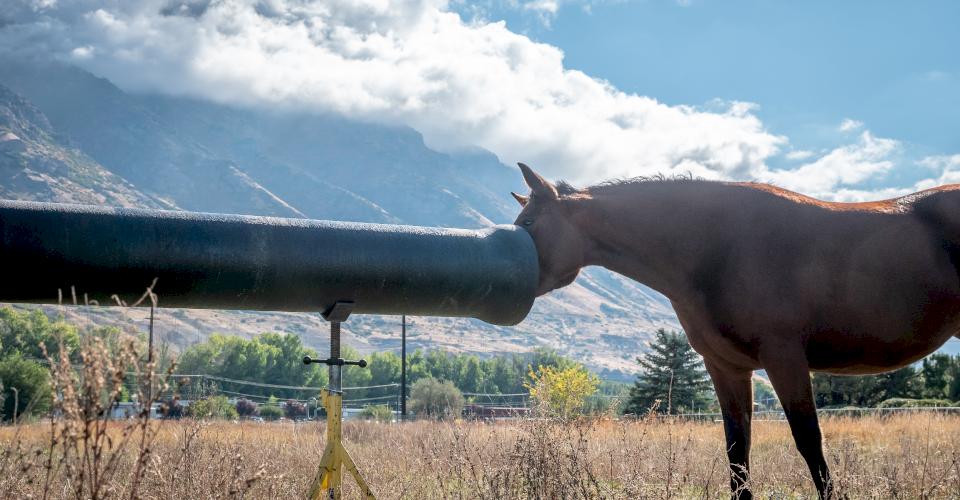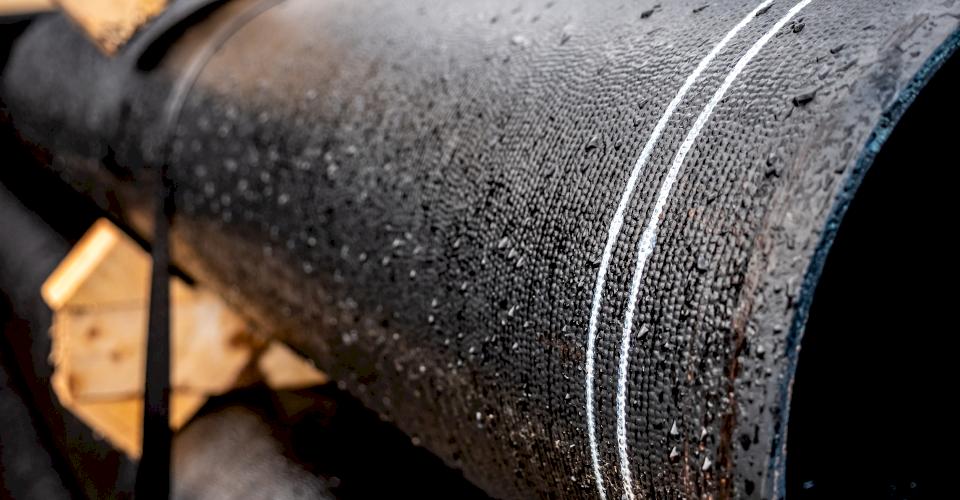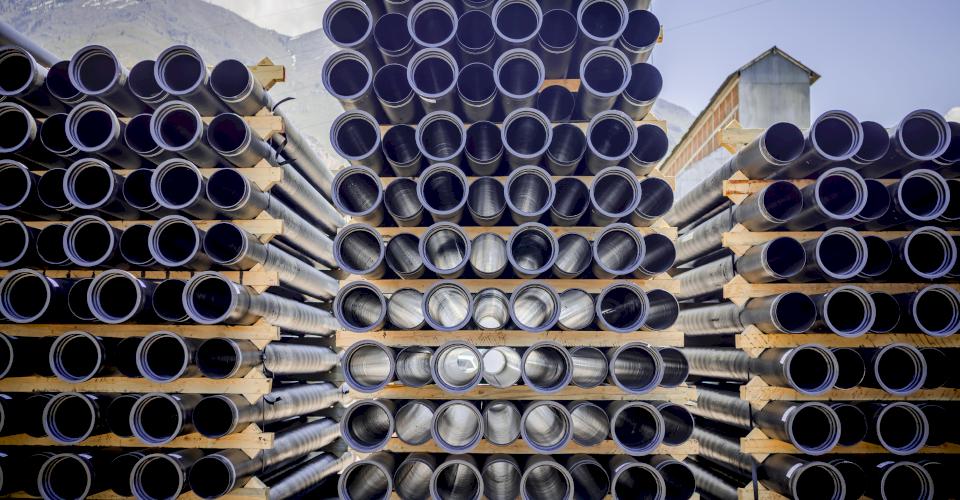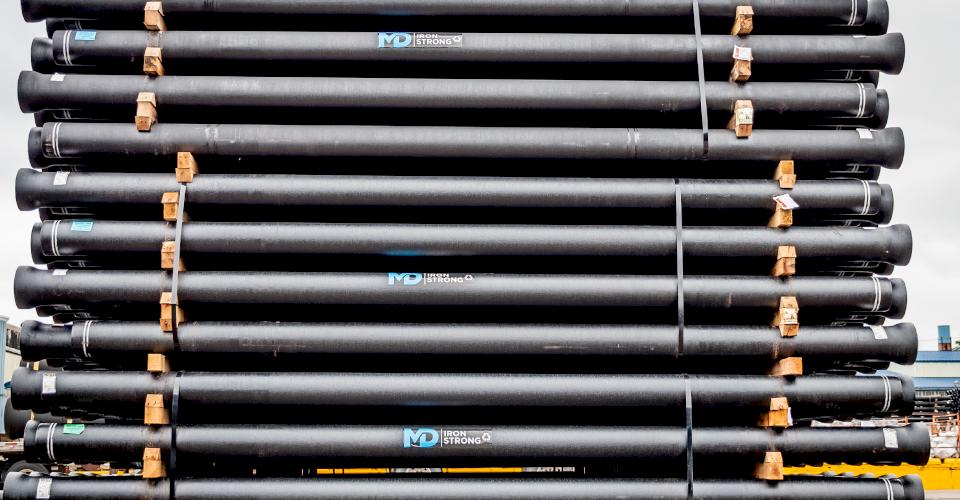“Any color he wants so long as it’s black”
Henry Ford gave us this famous quote back in 1909 when referring to the color of his newly invented Ford Model T automobile. Pretty much the same thing can still be said of the Ductile iron pipe that are manufactured today.
The normal, stocking item for Ductile iron pipe products is lined and coated with a seal coat that comes in your choice of black. Many water professionals wonder about the purpose of this coating, or paint, that gives Ductile iron pipe it’s familiar appearance. In this article we offer some explanation and history behind the application and advancement of the seal coat.
What is the seal coat?
The seal coat used on Ductile iron pipe is a highly regulated and refined asphaltic paint. Historically, cast-iron pipes and even early-period ductile iron pipes were exterior coated with all sorts of mastics, coal-tars, and similar substances. These coatings were usually black in color as well and the idea was it would provide some protection for the pipe in its buried environments.
These older coatings have long been removed from our product offerings and were subsequently replaced with more advanced seal coats that were a vast improvement over the predecessor coatings. However, these earlier improvements were nowhere near as gentle as the environmental-friendly and easy-to-use water-based seal coats of today.
National Sanitation Foundation - Now NSF International
The exterior and interior of Ductile iron pipe are lined with the same seal coat. They are actually applied to the pipe at the same time in our foundries. This water-based (no-VOC) seal coat is fully compliant with and registered by NSF /ANSI 61 (Drinking Water System Components – Health Effects) and NSF/ANSI 372 (Drinking Water System Components – Lead Content). It is thereby approved as safe for use in drinking water systems.
What is the purpose of the seal coat on the outside of ductile iron pipe?
The seal coat on the outside of the pipe serves no functional purpose to the reliability or serviceability of the pipe. It does give the exterior of the pipe a nice consistent look and color, but that is really all it is there for.
There is a perception that exists in the waterworks industry that the exterior seal coat acts as a standard form of corrosion control. This however, is not the case. In fact, the Ductile Iron Pipe Research Association (DIPRA) has stated, “although studies have shown that this standard coating added to the annealing oxide layer on the outside surface of Ductile Iron Pipe have a positive impact on corrosion resistance, they should not be relied on to control corrosion in aggressive environments”.
McWane Ductile was the first domestic ductile iron pipe manufacturer to switch-over entirely to water-based seal coat, having started this conversion at our New Jersey facility in October 2003. This water-based product not only removed the VOC containing thinners and binders in the previous sealcoat’s chemistry, but it also minimized and eventually eliminated mineral-spirits or similar solutions from the foundry cleanup protocols. It also abolished any requisite storage periods on newly-made ductile iron pipes that were implemented to allow any residual VOC's in the applied seal coat to dissipate.
This large-scale elimination of thinners and mineral spirits from the ductile iron pipe finishing process remains one of the most important advancements in the past 20 years, not only for the pipes, but for the people that make them and the land that supports them both, ensuring the ongoing safety and sustainability of our water supply as well.
If there are concerns regarding the soil conditions or other factors which may lead to a corrosive environment, proper use and reference to the Design Decision Model (DDM®) will help determine the proper protective measures needed. In most cases, simply wrapping the pipe in V-Bio® Enhanced Polyethylene Encasement is more than sufficient.
With all this known, it should also be noted that scratches, exceptions, or other discontinuities visible in the exterior seal coat, such as from handling, transport or other means are not a concern, and do not affect or diminish the serviceability or life-span of the DI pipe or fittings in any way.
What is the purpose of the seal coat on the inside of ductile iron pipe?
Much like on the exterior, the interior application of the seal coat no longer serves any necessary function. The current American Waterworks Association (AWWA) standard on Cement Mortar Linings (C104) states, “Unless otherwise specified, the manufacturer shall have the option of providing the cement-mortar lining with or without a seal coat”.
Most ductile iron pipe manufacturers in Europe do not apply a sealcoat to the interior of the pipe at all as they rely on a different means of curing the cement. In the U.S., however, the use of sealcoat applied over the cement mortar lined interior of pipe was the preferred method to ensure a steady, strong, and complete hydration of the thinly placed cement.
In the mid 1990’s, the use of a high-speed wring-out cycle immediately following the initial placement of the cement lining into the pipe was introduced. This, along with a temperature controlled air-drying process, stabilizes the hydration process making the sealcoat optional. Therefore, it is no longer a necessity to “properly cure” the cement mortar lining in most cases.
On rare occasions, the surface of a newly cement lined pipe there can exist a very thin layer of cement fines or latent material. Depending somewhat on the water chemistry in your system (hard vs. soft), these fines can temporarily interact and increase the alkalinity of a water through a new pipe segment resulting in “chalky water”. The layer of seal coat over the top of the cement lining on the interior of the pipe can help to mitigate this temporary alkaline spike.
This, however, is usually a non-issue for most pipelines and water supplies and is most often mitigated during the flushing operation of the newly installed line. Otherwise, given the limited number of loose fines in the pipeline to start, they are quickly dissipated in-service. It is likewise important to note that AWWA standards require DI pipe manufacturers to test production pipe samples every day to ensure conformance to quite restrictive leaching tolerances in the first place.
Conclusion
Although many colors may claim to be “the new black”, we at McWane Ductile are going to stick with the real thing. What really matters is the strong and reliable ductile iron pipe underneath that seal coat that will deliver clean and reliable drinking water to our homes and businesses for generations.
If you have any questions about seal coat or anything else related to ductile iron pipe, please don’t hesitate to reach out to your local McWane Ductile sales rep.
References:
Ductile Iron Pipe Research Association - https://www.dipra.org/ductile-iron-pipe-resources/technical-publications/features?download=7:linings-available-for-ductile-iron-pipe
American Water Works Association - ANSI/AWWA C151/A21.51 Ductile-Iron Pipe, Centrifugally Cast and ANSI/AWWA C104/A21.04 American National Standard for Cement-Mortar Lining for Ductile-Iron Pipe and Fittings for Water







